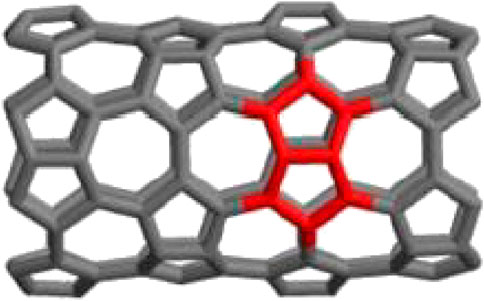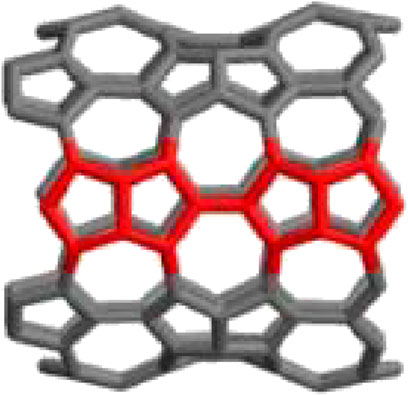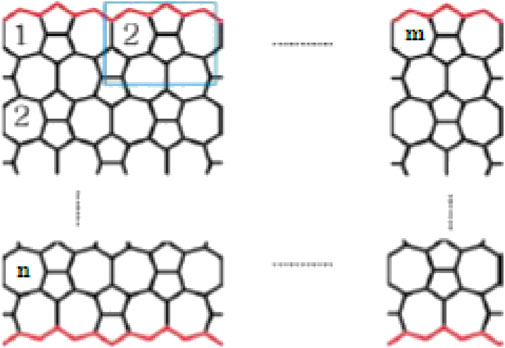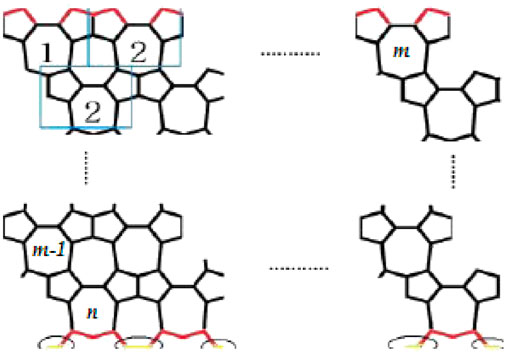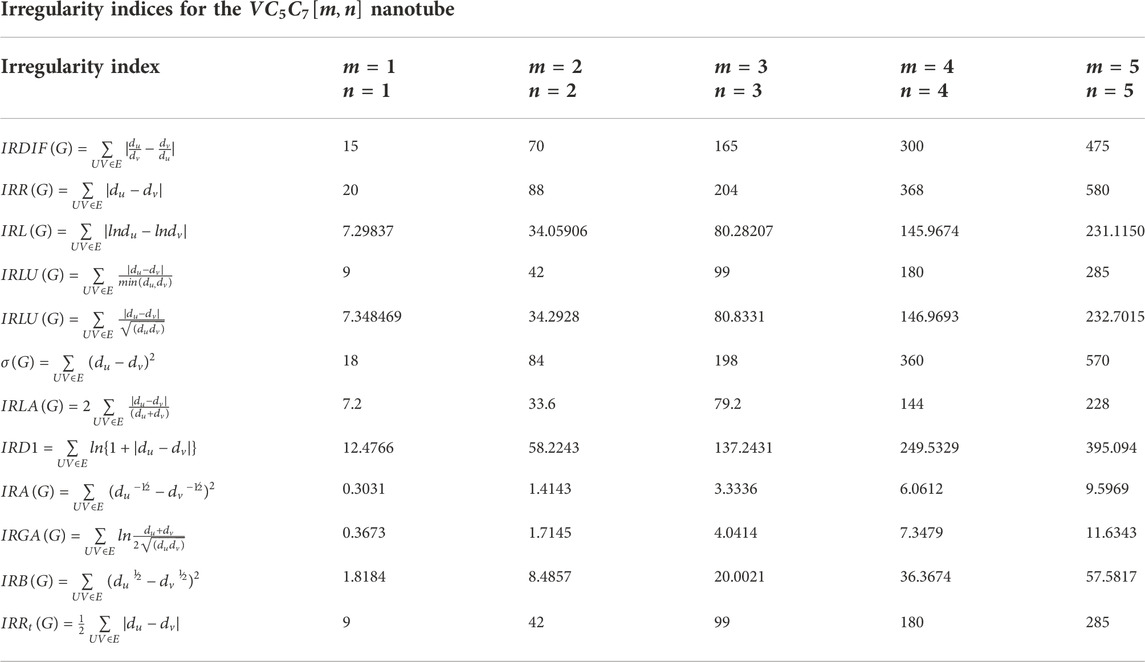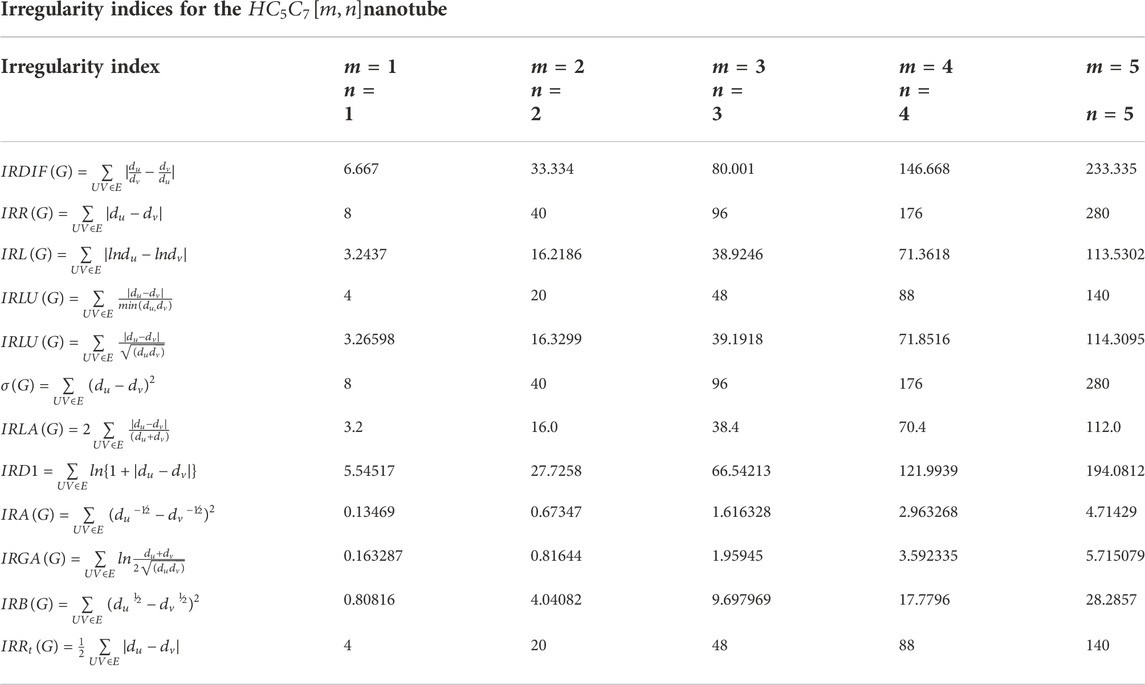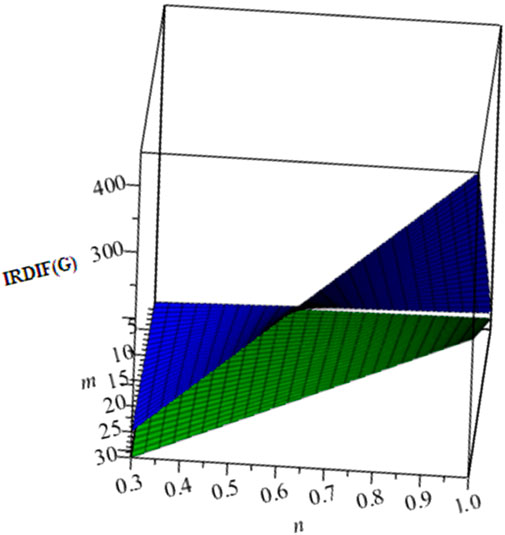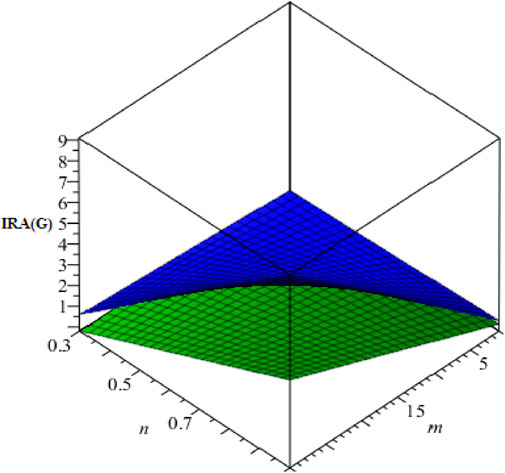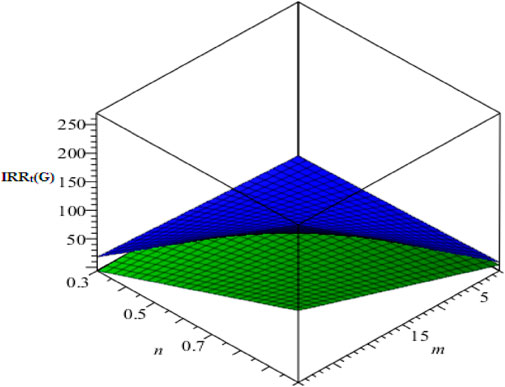- Department of Mathematics, University of the Punjab, Lahore, Pakistan
Scientific organizations are creating carbon nanotube-based composites like
Introduction
The chemical graph theory is rich with novel developments of functions and polynomials to foresee physiochemical aspects of chemical structures without using tools of quantum mechanics. One type of such a function is imbalance-based irregularity indices which determine the molecular complexity of the chemical substance under discussion. Carbon nanotubes are allotropes of carbon with a cylindrical-shaped nanostructure. These cylindrical-shaped carbon particles have amazing properties, which are significant for nanotechnology, optics, electronics, and various fields of material science and development [1–3].
Regarding flexible modulus and elasticity, carbon nanotubes are the stiffest and most grounded materials individually. This quality results from the covalent sp2 bonds framed between the carbon atoms. A multi-walled carbon nanotube was analyzed in 2000, which has a tensile strength of 63 gigapascals. The adaptability and quality of carbon nanotubes make them of potential use in controlling other nanoscale structures, which suggests that they will have a basic activity in nanotechnology building [4–7]. Molecular topologists are interested in studying the complexity, pattern, combinatorial properties, and irregularities of molecular structures. A basic tool is the conversion of the molecular structure into a graph theoretic model, where vertices are used as toms and edges are used as bonds.
In this article, we aim to compute the imbalance-based degree of irregularity of carbon nanotubes. The molecular graphs of carbon nanotubes
The two-dimensional lattice of
In order to proceed with our main objective, we have to be a bit familiar with some notions and notations of the graph theory. We consider only a simple and connected graph G with vertex V, edge set E, and du and dv, the degree of vertices u and v, respectively. A topological invariant is an isomorphism of the graph that preserves the topology of the graph. A graph is said to be regular if every vertex of the graph has the same degree. A topological invariant is called an irregularity index if this index vanishes for a regular graph and is non-zero for a non-regular graph. Regular graphs have been extensively investigated, particularly in mathematics. Their applications in the chemical graph theory initiated the discovery of nanotubes and fullerenes. Paul Erdos stressed the study of irregular graphs for the first time in history in [8]. In the Second Krakow Conference on Graph Theory (1994), Erdos officially posed an open problem as “the determination of extreme size of highly irregular graphs of given order” [9]. Since then, irregular graphs and the degree of irregularity have become one of the core open problems of the graph theory.
A graph in which each vertex has a different degree than the other vertices is known as a perfect graph. The authors of [10] demonstrated that no graph is perfect. The graphs lying in between are called quasi-perfect graphs, in which all except two vertices have different degrees [9]. Simplified ways of expressing irregularities are irregularity indices. These irregularity indices have been studied recently in a novel way [11, 12]. The first such irregularity index was introduced in [13]. Most of these indices used the concept of the imbalance of an edge defined as
These irregularity indices have applications in determining the properties of alkane isomers [21]. These applications pushed others to think in this direction. Most recently, authors have computed irregularity indices of chemical substances [33–36]. Hussain et al. established closed forms of the aforementioned irregularity indices for some benzenoid systems in [35] and some nanostar dendrimers in [36]. The present article can be treated as a continuation of the articles [35, 36].
The main results
In this section, we present our main results about the theoretical computation of irregularity indices of the aforementioned nanotubes.
Theorem 1: For
1
2
3
4
5
6
7
8
9
10
11
12
Proof: In order to prove the aforementioned theorem, we have to consider Figures 1, 3. Table 1 shows the mathematical distribution of the types of edges into two different classes.Now using Table 1 and the aforementioned definitions, we have1.
Test values of the irregularity measures of the nanotube VC5C7[m, n] has been given in Table 2. Now, we give our results about
Theorem 2: For
1.
2.
3.
4.
5.
6.
7.
8.
9.
10.
11.
12.
Proof: In order to prove the aforementioned theorem, we have to consider Figures 2, 4. Table 3 shows the distribution of edges into three different classes.Now using Table 4 and the aforementioned definitions from Table 1, we have1.
Graphical analysis, discussions, and conclusion
In this section, we present our computational analysis of the irregularity of both of these nanotubes and compare the results obtained. We used 3D graphs in which the Z-axis represents the values of the irregularity indices and the other two axes are devoted to m and n. We used a BLUE graph to show the behavior irregularity indices of
In Figure 6, we give a demonstration for the irregularity index AL. Again it can easily be concluded that
Data availability statement
The raw data supporting the conclusion of this article will be made available by the authors, without undue reservation.
Author contributions
MM conducted the computation and conceived the idea.
Acknowledgments
Author is thankful to professor Liu for technical support. Author is also thankful to the University of Punjab for the support.
Conflict of interest
The author declares that the research was conducted in the absence of any commercial or financial relationships that could be construed as a potential conflict of interest.
Publisher’s note
All claims expressed in this article are solely those of the authors and do not necessarily represent those of their affiliated organizations, or those of the publisher, the editors, and the reviewers. Any product that may be evaluated in this article, or claim that may be made by its manufacturer, is not guaranteed or endorsed by the publisher.
References
1. Deng H, Li X, Peng Q, Wang X, Chen J, Li Y. Monodisperse magnetic single-crystal ferrite microspheres. Angew Chem Int Ed Engl (2005) 117(18):2782–5. doi:10.1002/anie.200462551
2. Somorjai GA, Borodko YG. Research in nanosciences–great opportunity for catalysis science. Catal Lett (2001) 76(1-2):1–5. doi:10.1023/a:1016711323302
3. Corriu RJ, Mehdi A, Reyé C. Molecular chemistry and nanosciences: On the way to interactive materials. J Mater Chem (2005) 15(40):4285–94. doi:10.1039/b504536n
4. Baughman RH, Zakhidov AA, De Heer WA. Carbon nanotubes--the route toward applications. science (2002) 297(5582):787–92. doi:10.1126/science.1060928
5. Harrison BS, Atala A. Carbon nanotube applications for tissue engineering. Biomaterials (2007) 28(2):344–53. doi:10.1016/j.biomaterials.2006.07.044
6. De Volder MF, Tawfick SH, Baughman RH, Hart AJ. Carbon nanotubes: Present and future commercial applications. science (2013) 339(6119):535–9. doi:10.1126/science.1222453
7. Lau AKT, Hui D. The revolutionary creation of new advanced materials—Carbon nanotube composites. Composites B: Eng (2002) 33(4):263–77. doi:10.1016/s1359-8368(02)00012-4
8. Chartrand G, Erdos P, Oellermann O. How to define an irregular graph. Coll Math J (1988) 19:36–42. doi:10.1080/07468342.1988.11973088
9. Majcher Z, Michael J. Highly irregular graphs with extreme numbers of edges. Discrete Math (1997) 164:237–42. doi:10.1016/s0012-365x(96)00056-8
11. Horoldagva B, Buyantogtokh L, Dorjsembe S, Gutman I. Maximum sizeof maximally irregular graphs. Match Commun Math Comput Chem (2016) 76:81
12. Liu F, Zhang Z, Meng J. The size of maximally irregular graphs and maximally irregular triangle–free graphs. Graphs Comb (2014) 30:699–705. doi:10.1007/s00373-013-1304-1
14. Bell FK. A note on the irregularity of graphs. Linear Algebra Appl (1992) 161:45–54. doi:10.1016/0024-3795(92)90004-t
16. Vukičević D, Graovac A. Valence connectivities versus randić, zagreb and modified zagreb index: A linear algorithm to check discriminative properties of indices in acyclic molecular graphs. Croat Chem Acta (2004) 77:501
17. Abdo H, Brandt S, Dimitrov D. The total irregularity of a graph. Discr Math Theor Comput Sci (2014) 16:201
18. Abdo H, Dimitrov D. The total irregularity of graphs under graph operations. Miskolc Math Notes (2014) 15:3–17. doi:10.18514/mmn.2014.593
19. Abdo H, Dimitrov D. The irregularity of graphs under graph operations. Discuss Math Graph Theor (2014) 34:263–78. doi:10.7151/dmgt.1733
20. Gutman I. Topological indices and irregularity measures. J Bull (2018) 8:469. doi:10.7251/BIMVI1803469G
21. Reti T, Sharfdini R, Dregelyi-Kiss A, Hagobin H. Graph irregularity indices used as molecular discriptors in QSPR studies. MATCH Commun Math Comput Chem (2018) 79:509
22. Hu Y, Li X, Shi Y, Xu T, Gutman I. On molecular graphs with smallest and greatest zeroth-Corder general randic index. MATCH Commun Math Comput Chem (2005) 54:425
23. Caporossi G, Gutman I, Hansen P, Pavlovic L. Graphs with maximum connectivity index. Comput Biol Chem (2003) 27:85–90. doi:10.1016/s0097-8485(02)00016-5
24. Li X, Gutman I. Mathematical aspects of Randic, Type molecular structure descriptors. In: Mathematical chemistry monographs. Serbia: University of Kragujevac and Faculty of Science Kragujevac: Kragujevac (2006).
25. Das K, Gutman I. Some properties of the second zagreb index. MATCH Commun Math Comput Chem (2004) 52:103–12.
26. Trinajstic N, Nikolic S, Milicevic A, Gutman I. About the zagreb indices. Kemija u industriji: Časopis kemičara i kemijskih inženjera Hrvatske (2010) 59:577
27. Milicevic A, Nikolic S, Trinajstic N. On reformulated Zagreb indices. Mol Divers (2004) 8:393–9. doi:10.1023/b:modi.0000047504.14261.2a
28. Gupta CK, Lokesha V, Shwetha SB, Ranjini PS. On the symmetric division DEG index of graph. Southeast Asian Bull Math (2016) 40:59
29. Balaban AT. Highly discriminating distance-based topological index. Chem Phys Lett (1982) 89:399–404. doi:10.1016/0009-2614(82)80009-2
30. Furtula B, Graovac A, Vukičević D. Augmented zagreb index. J Math Chem (2010) 48:370–80. doi:10.1007/s10910-010-9677-3
31. Das KC. Atom–bond connectivity index of graphs. Discrete Appl Math (2010) 158:1181–8. doi:10.1016/j.dam.2010.03.006
32. Estrada E, Torres L, Rodríguez L, Gutman I. An atom–bond connectivity index: Modeling the enthalpy of formation of alkanes. Indian J Chem (1998) 37:849
33. Zahid I, Aslam A, Ishaq M, Aamir M. Characteristic study of irregularity measures of some Nanotubes. Can J Phys (2019) 97:1125–32. doi:10.1139/cjp-2018-0619
34. Gao W, Aamir M, Iqbal Z, Ishaq M, Aslam A. On irregularity measures of some dendrimers structures. Mathematics (2019) 7:271. doi:10.3390/math7030271
35. Hussain Z, Rafique S, Munir M, Athar M, Chaudhary M, Ahmad H, et al. Irregularity molecular descriptors of hourglass, jagged-rectangle, and triangular benzenoid systems. Processes (2019) 7:413. doi:10.3390/pr7070413
Keywords: irregularity index, VC5C7[m,n] and HC5C7 [m,n], nanotubes, imbalance-based irregularity measure, molecular computing
Citation: Munir MM (2022) Irregularity molecular descriptors of
Received: 17 June 2022; Accepted: 22 September 2022;
Published: 17 November 2022.
Edited by:
Fernando A. Oliveira, University of Brasilia, BrazilReviewed by:
Weigang Sun, Hangzhou Dianzi University, ChinaAli Mehri, Babol Noshirvani University of Technology, Iran
Copyright © 2022 Munir. This is an open-access article distributed under the terms of the Creative Commons Attribution License (CC BY). The use, distribution or reproduction in other forums is permitted, provided the original author(s) and the copyright owner(s) are credited and that the original publication in this journal is cited, in accordance with accepted academic practice. No use, distribution or reproduction is permitted which does not comply with these terms.
*Correspondence: Muhammad Mobeen Munir, bW11bmlyLm1hdGhAcHUuZWR1LnBr
 Muhammad Mobeen Munir
Muhammad Mobeen Munir